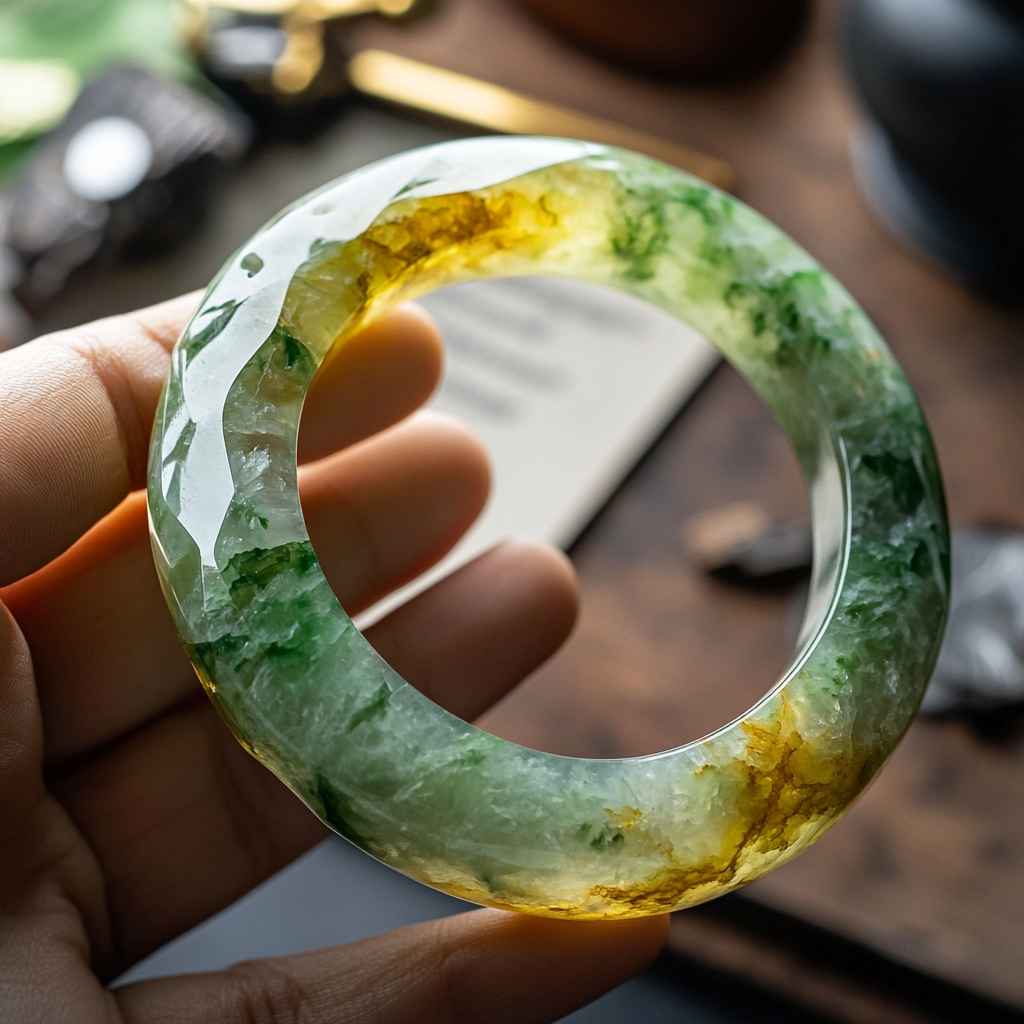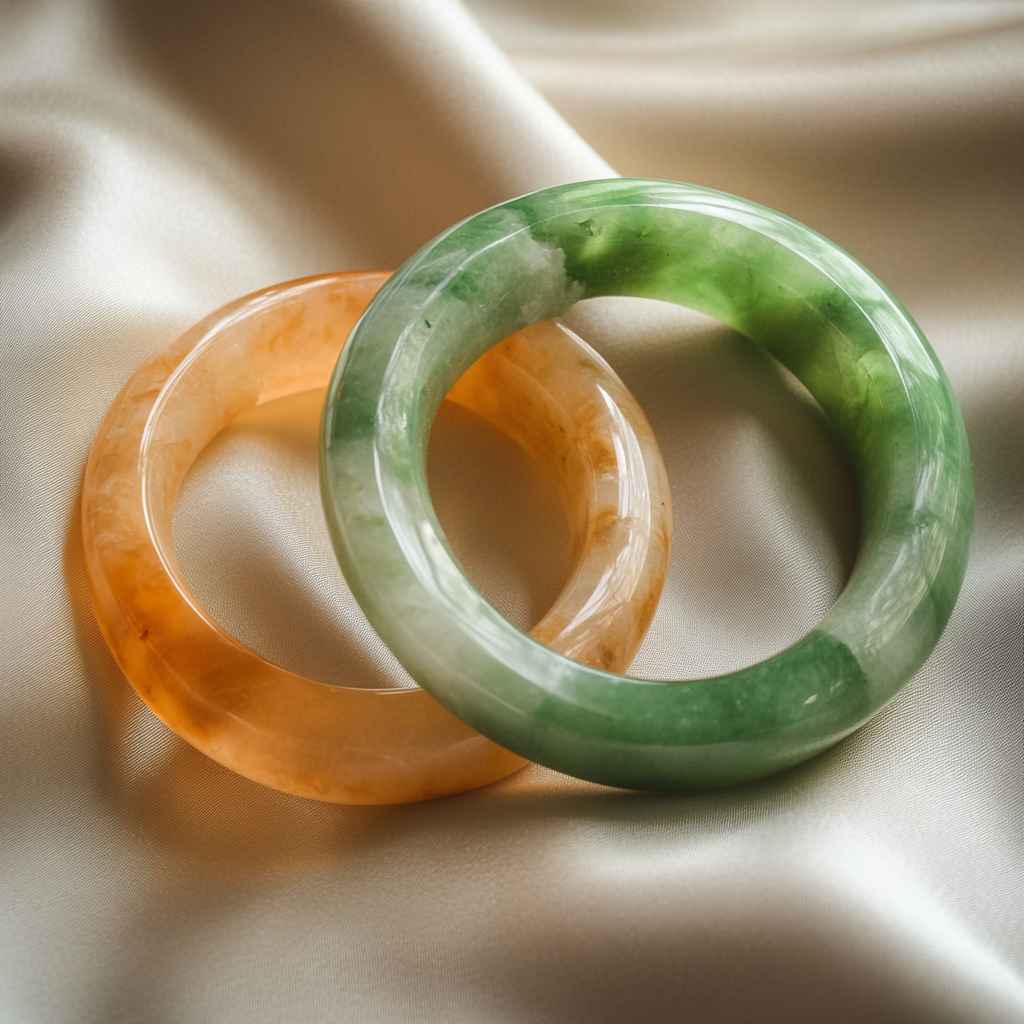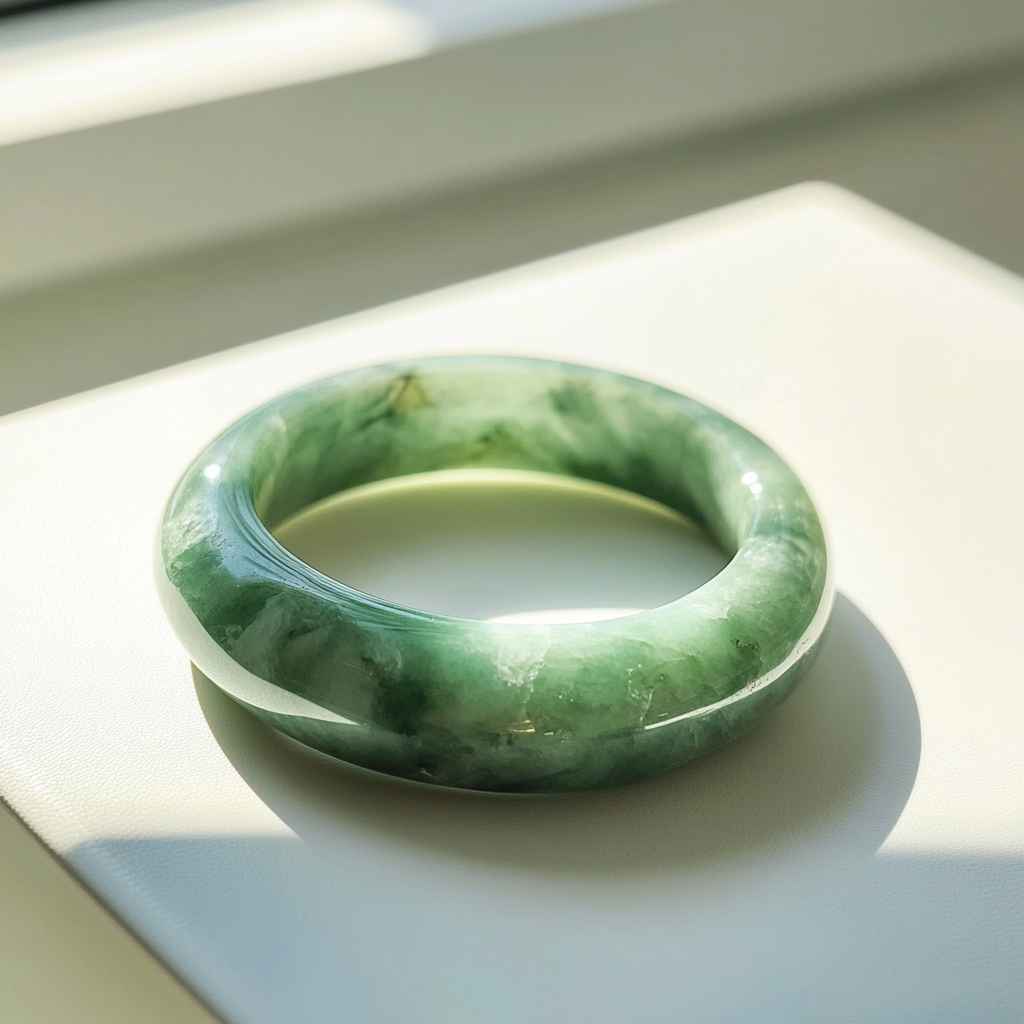Jade bangles are a timeless addition to any jewelry collection, admired for their beauty and cultural significance.
However, with imitations flooding the market, knowing how to identify authentic jade is essential.
Here’s your simple guide to spotting the real deal.

1. Understand the Types of Jade
There are two main types of jade, and knowing them is the first step:
- Jadeite: The rarer type, known for its vibrant green and lavender hues. It’s highly valuable.
- Nephrite: More common, with softer colors like white, gray, or pale green.
Learning these differences helps you assess your bangle’s value. Dive deeper into gemstone identification with our guide on what is gems and jewelry.
2. Check the Color
Real jade has natural, uneven hues that give it character.
- Subtle Variations: Look for cloudy or streaky patterns.
- Bright and Uniform?: Be cautious—dyed imitations often have overly vibrant, even colors.
Pro Tip: Jadeite is typically brighter than nephrite. Not sure about your jewelry’s authenticity? Check out how to tell if a ring is real for more tips.
3. Test the Texture and Feel
- The way jade feels can reveal its authenticity.
- Smooth and Cool: Authentic jade feels smooth to touch and stays cool, even in warm weather.
- Heavier than Fakes: Genuine jade is dense and weighty, unlike glass or plastic imitations.
- Want to evaluate your bangle’s size and comfort? Explore how to measure bangle size for insights.
4. Perform the Light Test
Shine a light through the bangle for more clues.
- Translucence: Real jade allows light to pass through softly, creating a glowing effect.
- Natural Patterns: Look for fibrous or granular structures under the light. These are hallmarks of authentic jade.
5. Conduct the Scratch Test
A light scratch test can reveal a lot.
- Real Jade: It’s hard and resistant to scratches.
- Fakes: Materials like glass or plastic will scratch easily.
Caution: Avoid testing on visible areas to prevent damage. When in doubt, consult a jeweler.aging your bangle—this test is best done on inconspicuous areas or left to a professional.
6. Evaluate the Price
- The cost of jade is a big indicator of its authenticity.
- High Quality = High Price: Genuine jade, especially jadeite, is rare and expensive.
- Too Cheap?: If it seems like a steal, it’s likely not real.
- Want to understand why some jewelry is so expensive? Read why gold is more valuable than money for context.
7. Seek Professional Appraisal
Still unsure? Take your bangle to a professional jeweler or gemologist.
- Advanced Tools: Experts use equipment like refractometers and spectroscopes to verify authenticity.
Learn more about traditional craftsmanship in how bangles are made to appreciate the artistry behind genuine pieces.
Red Flags for Fake Jade
- Be cautious of these telltale signs:
- Artificial Colors: Dyed jade often looks unnaturally bright.
- Lightweight Feel: Imitations lack the dense weight of real jade.
- Too Good to Be True?: Extremely low prices are usually a red flag.
- Explore imitation jewelry to learn how to spot other counterfeits.
Final Thoughts
A genuine jade bangle is more than just jewelry—it’s a blend of tradition, beauty, and cultural heritage. By learning its unique characteristics and performing simple tests, you can confidently distinguish real jade from fakes.
Always buy from reputable sellers and ask for certifications. With the right knowledge, your jade bangle can become a cherished piece in your collection.
Want to explore more about jade authenticity? Visit our guide on real jade bangle test for additional tips.

